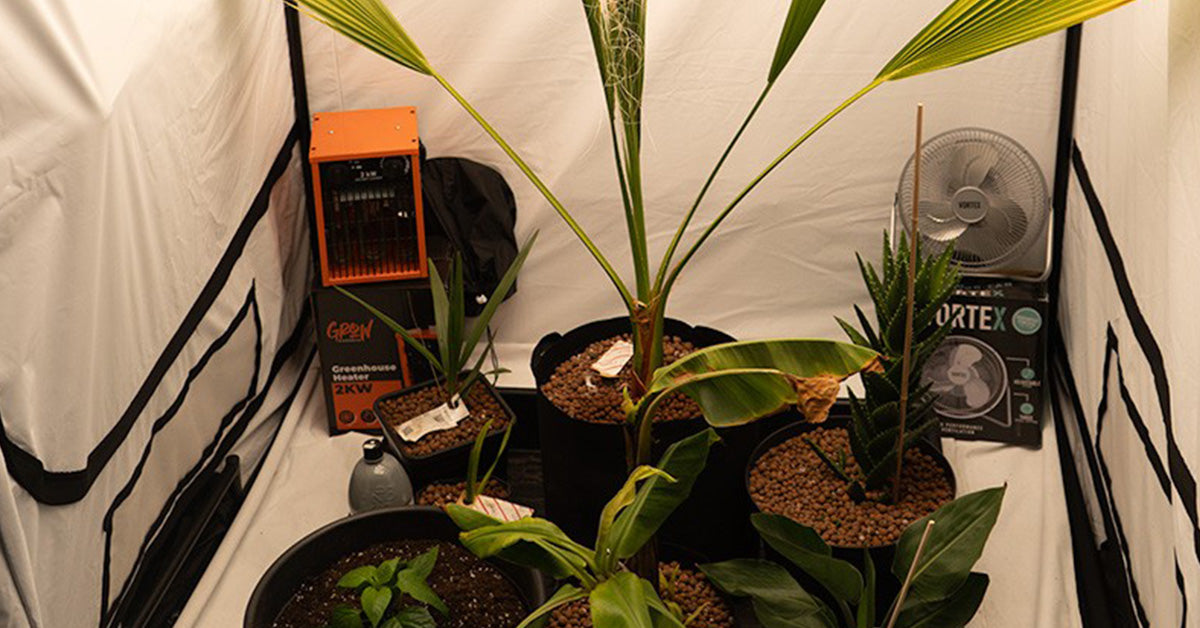Introduction
Grow tent kits offer everything you need to create ideal indoor environments for growing plants. These comprehensive kits streamline the process of setting up and maintaining a productive grow space, whether you are a seasoned grower or just starting out. However, by understanding the purpose and intricacies of each component you can really maximise your results, for a healthy, thriving indoor garden.
Understanding the Components of a Grow Tent Kit
A grow tent kit typically includes several essential components that work together to create a high-performing indoor garden. At its core, you'll find the grow tent itself. This enclosed, lightproof structure acts as a controlled environment for your plants, featuring a sturdy frame and a thick canvas exterior lined with a reflective material.
Next, you've got the grow light, which provides your plants with the necessary light for photosynthesis and growth. Depending on the kit, these lights can range from fluorescent to HPS to, more commonly these days, LED grow lights.
The ventilation system is another commonly found component. This typically includes an exhaust fan, which is used to expel stale air and excess heat, creating optimal airflow and preventing the build-up of heat and humidity. The fan is teamed up with a carbon filter, which is used to eliminate unwanted odours from the grow space (and from the air that leaves the grow space). The ventilation system is connected together using ducting and duct clips.
|
Component |
Purpose |
|
Grow Light |
Provides light energy for photosynthesis |
|
Extraction |
Removes stale air and heat from the grow tent |
|
Carbon Filter |
Removes smells from the grow space |
The Role of Accessories
Grow tent kits often go beyond the basic essentials by including important accessories. Heavy-duty timers are a common feature, automating your lighting schedules to ensure that your plants receive the right amount of light and darkness. You'll also find hanging equipment, like Rope Ratchets and Jack Chain, which is used to hang your grow light and extraction.
Optimising Ventilation, Odour Control and Grow Tent Positioning
Position your inline fan and filter as close to the top of the grow tent as possible. Heat rises, so keeping your ventilation system elevated ensures that you catch as much hot air as possible, thus helping you to control environmental conditions as effectively as possible.
Many newbie growers think that it is enough to extract air from a grow tent back into the same room; however, to be fully effective the air needs to be ducted to an outside point.
This prevents stale, moist, CO2 depleted air from simply recirculating through the grow tent again and again.
It also works to generate negative pressure. When you force air out of the room, the difference in pressure that it creates naturally pulls fresh, cool air in from outside, bringing with it a renewed supply of CO2. This type of air movement also helps to prevent unwanted smells from escaping and finding their way outside.
When ducting to an outside point, you should aim to keep ducting runs as straight as possible. The more bends there are in the ducting the less efficiently your extraction system will run. Bends also add to noise levels, as the air is forced against sidewalls of the ducting, rather than running in a straight line.
For these reasons, it's worth thinking about the location and position of your grow tent before you get up and running, keeping it close to your air extraction point, wherever that may be. Note the position of plug sockets in the room. If they are further away than power cables will allow for, have suitable extension cables at the ready.
Getting the Best Out of LED Lighting
Adjust the height of your LED grow light according to your chosen plant species and its stage of growth. It's always better to be conservative on this front than to overdo things. Stressing out your plants can set you back for weeks and should be avoided: start off with the LED raised up and on a low setting. You can then increase the intensity and lower the light to its optimal position as your plants settle in.
Modern LEDs feature incredibly even lighting footprints, so, as long as you position your grow light in the centre of the grow tent, you're guaranteed to get a great light spread.
Be sure to implement the correct lighting cycle. This is typically 18 hours on and 6 hours off for vegetative growth, switching to 12 hours on and 12 hours off for the flowering stages.

